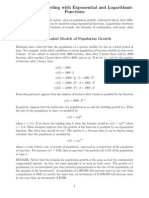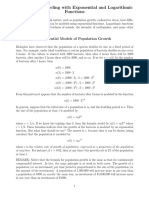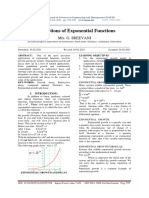0% found this document useful (0 votes)
4 views3 pagesSTEAM Task - Functions
The document discusses functions, specifically exponential functions, which model rapid population growth in ecology. It explains the formula for exponential growth and provides an example of projecting population size over time, highlighting the significance of these functions in understanding ecological dynamics. The research emphasizes the importance of visual representations to illustrate population growth and its implications for resource management and conservation efforts.
Uploaded by
diyaCopyright
© © All Rights Reserved
We take content rights seriously. If you suspect this is your content, claim it here.
Available Formats
Download as PDF, TXT or read online on Scribd
0% found this document useful (0 votes)
4 views3 pagesSTEAM Task - Functions
The document discusses functions, specifically exponential functions, which model rapid population growth in ecology. It explains the formula for exponential growth and provides an example of projecting population size over time, highlighting the significance of these functions in understanding ecological dynamics. The research emphasizes the importance of visual representations to illustrate population growth and its implications for resource management and conservation efforts.
Uploaded by
diyaCopyright
© © All Rights Reserved
We take content rights seriously. If you suspect this is your content, claim it here.
Available Formats
Download as PDF, TXT or read online on Scribd
/ 3































































